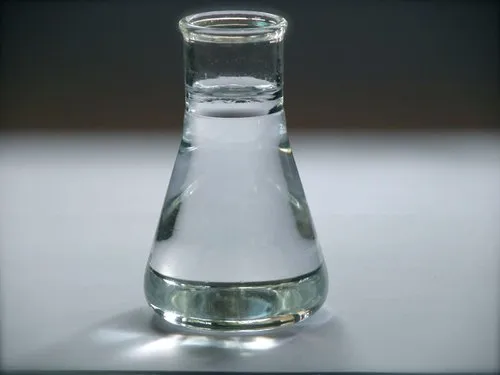IUPAC Name
Propane-1,2,3-triol
Cas Number
56-81-5
HS Code
2905.45.00
Formula
C3H8O3
Industry
Palm Derivatives
Appearance
Clear Colorless Liquid
Common Names
1,2,3-propanetriol, Glycerol
Packaging
20 MT/20'ft in HDPE Drums
Refined glycerine, sometimes known as glycerol or glycerin, is a simple sugar alcohol with three hydroxyl groups, which help to make it water soluble and hygroscopic. This material has a high boiling point and viscosity, and it appears as a colorless, odorless, and transparent liquid that emphasizes its natural sweetness and low toxicity. Its boiling point is 290°C, while its normal melting point is 17.8°C. The density of refined glycerine is 1.26 g/cm³. It comes from petrochemical feedstock and is used in food, medicine, cosmetics, personal care, and biodiesel manufacturing, among other industries.
MANUFACTURING PROCESS
Threshing
Thorough threshing marks the initial stage in palm fruit treatment, eliminating the primary stem and any attached spikelets.
Sterilization
Steaming palm fruits prevents hydrolysis and oxidation, facilitating the separation of resin, gum, and kernel.
Digestion
Mechanically mixing and pounding sterilized fruits releases palm oil, aided by additional heat.
Pressing
Hydraulic pressure extraction is utilized to obtain oil from processed fruit
Oil Clarification
Following extraction, the oil undergoes purification through the addition of hot water to eliminate impurities, followed by filtration.
Deacidification
Solvent extraction with methanol removes free fatty acids, crucial for preventing oil oxidation.
Transeferication/Saponification
Further refinement is necessary to produce refined glycerine as hydrolysis breaks down triglycerides into glycerol and fatty acids.
Glycerin Pretreatment
Distillation serves as one of the separation techniques to purify the glycerine and fatty acid combination.
Evaporation
The complete purification of glycerine involves the evaporation of residual methanol from the deacidification process.
Refined glycerine, sometimes known as glycerol or glycerin, is a simple sugar alcohol with three hydroxyl groups, which help to make it water soluble and hygroscopic. This material has a high boiling point and viscosity, and it appears as a colorless, odorless, and transparent liquid that emphasizes its natural sweetness and low toxicity. Its boiling point is 290°C, while its normal melting point is 17.8°C. The density of refined glycerine is 1.26 g/cm³. It comes from petrochemical feedstock and is used in food, medicine, cosmetics, personal care, and biodiesel manufacturing, among other industries.
MANUFACTURING PROCESS
Threshing
Thorough threshing marks the initial stage in palm fruit treatment, eliminating the primary stem and any attached spikelets.
Sterilization
Steaming palm fruits prevents hydrolysis and oxidation, facilitating the separation of resin, gum, and kernel.
Digestion
Mechanically mixing and pounding sterilized fruits releases palm oil, aided by additional heat.
Pressing
Hydraulic pressure extraction is utilized to obtain oil from processed fruit
Oil Clarification
Following extraction, the oil undergoes purification through the addition of hot water to eliminate impurities, followed by filtration.
Deacidification
Solvent extraction with methanol removes free fatty acids, crucial for preventing oil oxidation.
Transeferication/Saponification
Further refinement is necessary to produce refined glycerine as hydrolysis breaks down triglycerides into glycerol and fatty acids.
Glycerin Pretreatment
Distillation serves as one of the separation techniques to purify the glycerine and fatty acid combination.
Evaporation
The complete purification of glycerine involves the evaporation of residual methanol from the deacidification process.
